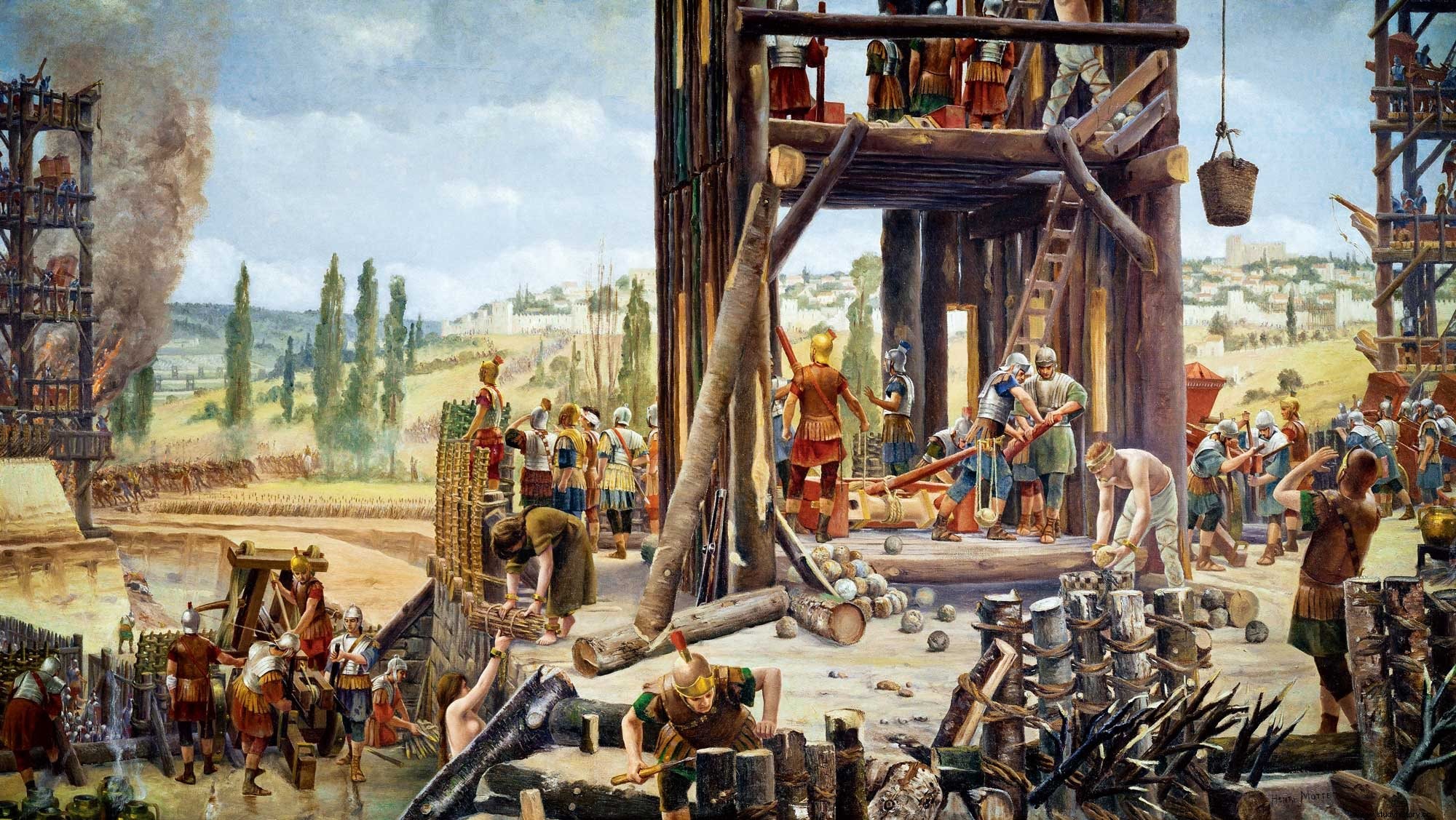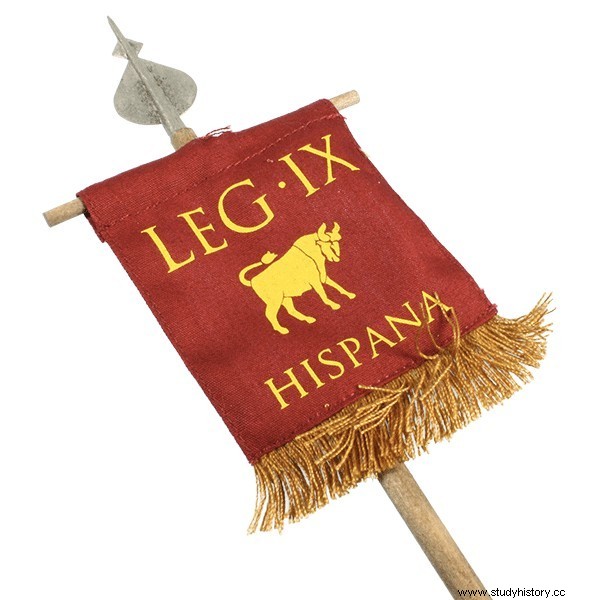The origin of the IX is today still doubtful. The historical popularizer Stephen Dando-Collins holds in his book The Legions of Rome that this unit was recruited in Hispania by Pompey the Great in 65 BC. along with the VI, VII and VIII, but it is also known that Gaius Julius Caesar commanded an IX during his stay in Hispania and that this unit accompanied him to Gaul around 58 BC, remaining there under his command throughout the campaign.

The Siege of Alesia (Henri-Paul Motte)
When civil war between Caesar and the Senate broke out in January 49 B.C. the ninth was still under the orders of the dictator. We know that in 48 B.C. participated in the battle of Dyrrhachium (today Dürres, Albania) and Farsalia (in Thessaly, Greece), and in 46 B.C. in Ruspina (today Monastir) and Tapsos (Ras Dimas, both in Tunisia) against the Pompeian forces, their members being discharged at the end of the conflict and housed in Piceno, the small homeland of the Pompeys.
It was Gaius Octavius , Caesar's heir and future Augustus, who pulled those veterans and rearmed the IX in the face of his confrontation with Sextus Pompey in Sicily, participating in the operations that Agrippa led against the last republican in the decisive battle of Nauloco (today Spadafora, Messina). After the defeat of Pompey, the IX was quartered in Macedonia, where it was until it was mobilized on the side of Octavio before the advance of Marco Antonio. It is known that at the battle of Accio (today Preveza, Greece), on September 2, 31 BC, the IX was one of the legions commanded by Tito Estatilio Tauro Commander-in-Chief of Octavian's ground forces. It was after the great victory of Accio when the IX accompanied Octavio to Hispania, during his stay in the Tarraconensis, to actively participate in the Cantabrian wars (25-13 BC). It is likely that the title of Hispanic comes from this long campaign in which the unit was involved. It is also believed that the emblem of the legion was a bull, a Hispanic attribute that may or may not be a coincidence.

After the Cantabrian campaign, the IX spent a good season on the Rhine, then to Pannonia (today Hungary) and later, already in the time of Emperor Tiberius, to Cyrenaica to fight the rebel Tacfarinas in the interior of present-day Libya, until Claudius, in 43 to be more exact, undertook the invasion of Britannia and the IX formed part of the forces displaced to the island by the legate Aulo Plautius . In 50 the IX was one of the legions that defeated the local régulo Carataco in Caer Caradoc (today Shropshire). Permanently camped in Lindum Colonia (today Lincoln), there it remained until 61 when the rebellion of queen Boudica raised half of Britain against Rome, was mobilized by the governor Suetonius Paulinus and suffered a severe defeat at the command of the legate Fifth Petilius Cerealis in Camulodunum (today Colchester). Only the cavalry could escape the slaughter and had to be reinforced with two thousand men from German levies to enter the fight again. Ten years later Cerealis returned to Britain as governor, defeated the Brigantes and established the IX's permanent base near Eboracum, York. Therefore, it is probable, but not confirmed, that this legion participated in the future construction of Hadrian's Wall.

The Eagle Legion
Between 82 and 83, the IX actively participated in the invasion that Gneo Julio Agricola carried out in Caledonia (today Scotland), being the most prominent in the battle of Mons Graupius . The only historical source that narrates these events are the texts of Tacitus, father-in-law of Agricola, so the great successes of the Roman must be quarantined because we could be facing a eulogy for greater glory of a brave and daring Roman who ended very badly because of Domitian's envy. The last appearance of the IX in Britain corresponds to the campaign of 108, but it did not disappear in the mists or was annihilated between 108 and 120 as Rosemary Sutcliff narrated so well. in her young adult novel El Águila de la Novena , but instead continued on its way across the borders of an increasingly unstable empire.
Archeology and epigraphy have collapsed the myth that inspired the British author to create her successful novel or the screenwriter of the film The Eagle's Legion . Today we know that until 131 the IX was stationed in Batavian lands, in Noviomagus (Nijmegen, Holland), the year in which she was sent to the compromised eastern border. That is the last known date of the IX. His trace is lost in the East, perhaps in Judea during the rebellion of Simon Bar Kobja (132-135), perhaps in Armenia or Cappadocia in the time of Marcus Aurelius (161), or even in a German invasion in 162. The plausible it is that in the list of active legions of the philosopher emperor the IX no longer appeared. This is not something unusual, and even more so knowing how protective Roman historians were in everything related to defeats against barbarians, minimizing the impact, and even hiding evidence for the sake of the stability of the state.
